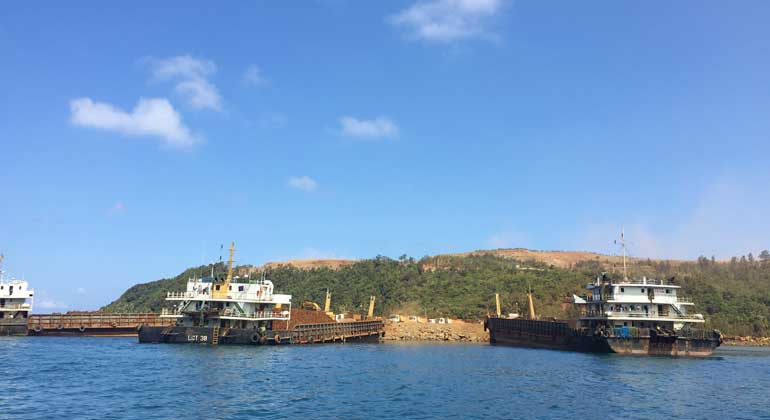
THE Philippine nickel industry expects expanded production next year to fill the gap left by Indonesia’s nickel ore export ban to between 40 and 50 million wet metric tons (WMT) of ore, possibly accompanied by higher prices due to supply concerns.
“It’s more than 40 million tons, but let’s say, whether it exceeds 50 million tons, I doubt,” Philippine Nickel Industry Association (PNIA) President Dante R. Bravo told reporters on the sidelines of the group’s year-end report news conference in Quezon City.
“That would depend basically on the prices, particularly for the lower grades because that is where the added volume would be coming from. I think, for medium and higher grades we have limited volume on these,” he added.
According to the Mines and Geosciences Bureau (MGB), production of nickel ore in the first half was 11.306 million dry metric tons (DMT) or about 17.395 million wet metric tons (WMT), valued at P12.24 billion.
For 2019, Mr. Bravo said that production could hit about 39 million WMT, equivalent to 25 million to 26 million DMT.
Indonesia has banned the export of nickel starting 2020, in a bid to develop a domestic processing industry that would capture more value-added from the nickel trade. The ban was announced on Sept. 2, bringing forward an earlier announced ban that was scheduled for 2022.
“Because of the Indonesian export ban, we expect that there will be ramp-up of production for ore exports,” Mr. Bravo said.
“Likely, there is going to be an increase in the price of ore because there is a shortage of ore,” Mr. Bravo said.
“When the price is a bit high… if you can make money, you can go a longer way to mine and that could increase the volume,” he said.
Mr. Bravo noted that the US-China trade war may still pose a great challenge for the industry.
“It makes everybody uncertain in terms of foreign exchange, in terms of economic growth, in terms of foreign direct investment,” he said. — Vincent Mariel P. Galang
